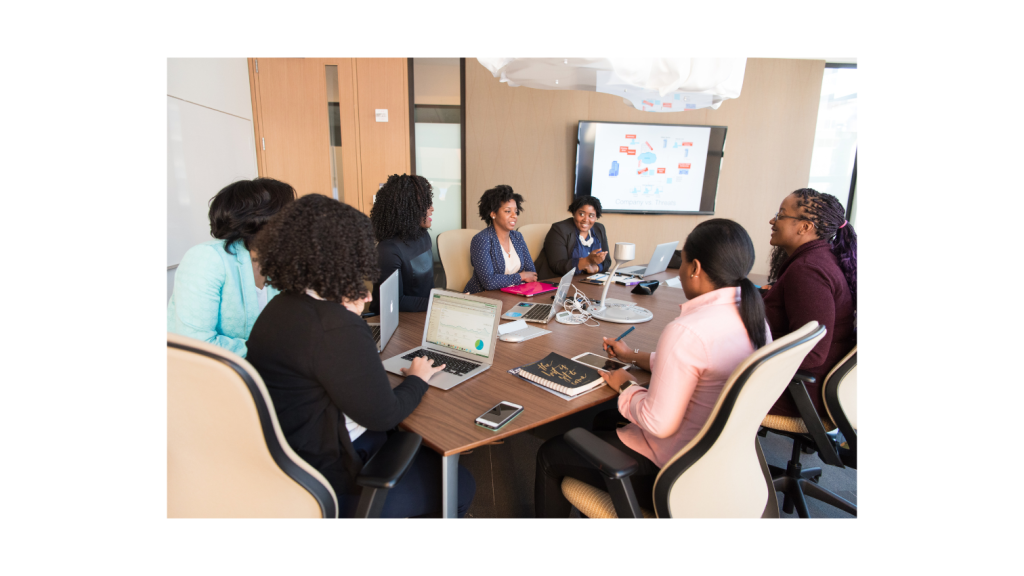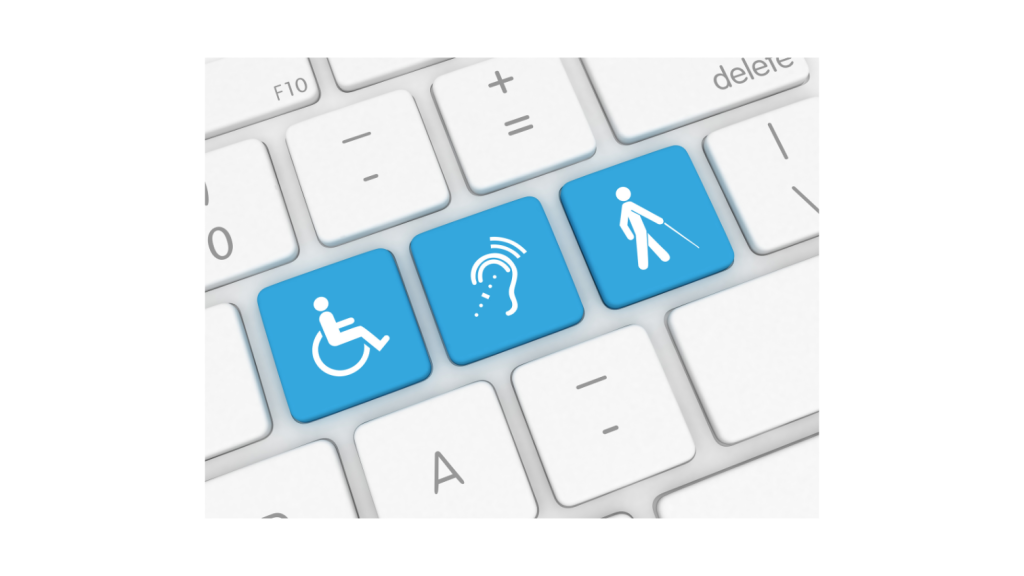Beyond the Screen: How ASL Interpreting Enhances Virtual Events
Planning an online event or class and not sure how to handle ASL interpreting? From tech setup to choosing the right number of interpreters, it can feel like a lot—especially on a tight schedule. The good news? You don’t have to do it alone. Here’s how to make accessibility simple and stress-free.
Table of Contents
When you are ready to learn, connect, or celebrate, it is difficult to find the conversation happening without you. For many Deaf and hard-of-hearing individuals, this is still a reality in today’s digital-first world.
While virtual events and online learning have opened doors for millions, accessibility hasn’t always kept pace. Thankfully, more organizations are stepping up with accessibility solutions that make a real difference.
One powerful example? ASL for online events done right.
In this post, we’ll explore how universities, businesses, and governments are making online spaces more inclusive—and what we can all learn from their efforts.
Additionally, we will help you get to the best practices that make any event that requires ASL online interpreting impeccable and a delight for all participants.

Making Online Events Work for Everyone: The Role of ASL Interpreting
You’ve probably attended a webinar or joined a live stream before.
However, there’s a whole world of virtual events out there that go beyond the usual formats and may require ASL interpreting services.
Each of these events has its own structure, goals, and level of interaction—but they all depend on thoughtful design, tech, and accessibility to truly work for everyone.
Online Conferences
Let’s say you sign up for an online conference. You’re moving between sessions, listening to keynote speakers, and maybe even joining breakout rooms to network.
It’s like being at a real conference hall, just from your desk. However, ASL online can ve very different from in-person sign language interpreting.
Virtual Workshops and Summits
Alternatively, maybe you’re in a virtual workshop, rolling up your sleeves to learn something hands-on—sales strategies, for example, or learning a new tool—with real-time feedback.
Real-time feedback requires the skilled gestures of an ASL professional with experience.
Then, there are virtual summits, which often span a few days and bring together expert talks, panel discussions, and a mix of live and prerecorded sessions. They’re great for deep learning and catching up on your own time.
However, they may challenge an interpreter unused to communicating with multiple speakers.

Networking Events and Roundtables
Some events focus more on human connection, like virtual networking sessions or roundtables, where smaller groups come together to share ideas or brainstorm.
These are often more relaxed and interactive, especially when everyone gets a chance to talk.
ASL for Online Business Events
If you work in a company or government setting, you might attend virtual town halls, where leadership gives updates, answers questions, and keeps everyone aligned.
There are also product launches, streamed online to create buzz, show off new features, and engage customers in real time.

Virtual Award Shows and Expos
On the more creative side, there are virtual award ceremonies, retreats, and even trade shows where booths go digital, and you can explore offerings, chat with vendors, or watch live demos without walking a single aisle.
Now, think about how all of these virtual events—whether it’s a summit, a workshop, or a company town hall—depend on clear communication to succeed.
For Deaf and hard-of-hearing participants, that means having full access through ASL interpreting.
But access isn’t just about adding an interpreter to the screen—it’s about making sure the interpreter is visible, the video is high-quality, and the event platform supports their role.
Whether it’s a fast-paced product launch or a deep-dive workshop with technical terms, ASL interpreting needs to be thoughtfully integrated, just like any other part of the event experience.
When done right, it turns a passive viewing experience into an inclusive space where everyone can engage, learn, and contribute.
Key Considerations for ASL Interpreting Providers by Event Type
ASL (American Sign Language) online interpreting comes with unique considerations depending on the type of event and technology used.
Webinars and Live Streams
Consider your chosen platform. It should have spotlighting capability to keep interpreters visible at all times.
Delayed feeds or poor internet quality can throw off timing. In such scenarios, real-time captioning support helps.

Virtual Conferences and Online Summits
Platform compatibility for pinning or embedding interpreters is essential. Zoom and Webex are two popular choices for multi-speaker conferences.
Keep in mind that multiple sessions or breakout rooms may require a team of ASL interpreters and coordination with tech staff.
Virtual Networking Events and Roundtables
Smaller group settings may mean interpreting in real-time.
Unmoderated conversations in more intimate events with a human component should be brought to the attention of the ASL provider to handle them in advance.
During more interpersonal interactions, interpreters must manage turn-taking and informal language.
Workshops and Interactive Training Events
Look for dynamic content such as screen sharing, whiteboards, and polls where interpreters need prep materials in advance.
Furthermore, participants may ask unexpected questions—interpreters should be familiar with the subject matter at such events.
Product Launches and Trade Shows
Carefully review the program. Look for re-recorded or live hybrid models, which require both translation and real-time interpretation.
Ask the organizer to provide glossaries for technical terms or brand-specific language.

Internal Events and Town Halls
Confidentiality and security are critical, especially for internal company meetings.
Jargon-heavy content and company acronyms may additionally overload the interpreter’s attention.
Access to internal docs ahead of time prevents vocabulary mishaps and confusion.
Virtual Award Ceremonies and Retreats
Visual aesthetics is a prerequisite at ceremonial or celebratory events.
Placement of interpreters in visually busy screens, dress code, and protocol are just several considerations professional ASL providers keep in mind.
Consider emotional or artistic performances at ASL online events—interpreters may need to convey tone, mood, or even poetry.
Technology-Specific Needs
Again, ensure the platform of choice features support for pinning, spotlighting, or embedding interpreters into the feed.
Considering video quality, low resolution makes it hard to see hand shapes or facial expressions. Use HD video, keeping in mind the best practices for text on stream.
If the platform allows only limited screens, prioritize interpreter visibility during online events with multiple video feeds.

ASL is not a Substitute for Captions—Some Deaf Participants Prefer Both
Using both ASL interpreting and live captioning in online events and classes creates a more inclusive and flexible experience for everyone.
While ASL provides a rich, visual language that many DHOH individuals prefer, live captioning offers real-time text.
Real-time captions support a wide range of needs—from hard-of-hearing participants to non-native speakers, and even those in noisy environments.
Together, they give participants the choice to engage in the way that works best for them.
In a virtual classroom or event, this means no one is left out—whether it’s a fast-paced discussion, a technical lecture, or a panel of speakers.
When both are provided and thoughtfully integrated, accessibility becomes a seamless part of the experience, not an afterthought.
ASL Online Classes For Student Interpreters
ASL has become so accessible and widely used in online settings that many universities offering ASL programs for both interpreters and students now deliver most of their courses virtually.
In these programs, only a small number of classes are held in person. The rest take place on virtual platforms, often using tools like video relay services (VRS) and video remote interpreting (VRI) to support real-time interaction and language practice.

University of Northern Colorado (UNC)
(UNC) offers a primarily online Bachelor of Arts in American Sign Language-English Interpretation. This program combines online coursework with two weeks of annual in-person immersion.
Gallaudet University
Through its ASL Connect program, Gallaudet provides online ASL courses designed by Deaf ASL-fluent scholars. These courses aim to teach ASL and Deaf Studies, making the language and culture accessible to a broader audience.
The George Washington University
George Washington University (GW) has established protocols for scheduling ASL interpreters and live captioners for virtual events. They recommend providing event details and materials in advance to facilitate effective interpretation and ensure accessibility for all participants.
Best Practices for ASL Online Classes and Events
First time running an ASL online event? Don’t get nervous—get prepared:
Prep time. Request scripts, slides, run-of-show, or terminology ahead of time.
Back-up interpreters. Especially for long or high-stakes events, fatigue management is key.
Technical rehearsal. Test camera angles, lighting, background contrast, and positioning with the client.
Participant experience. Ensure ASL interpreters are visible on all devices, especially on mobile.
Accessibility isn’t just a box to check—it’s how you show up for everyone in your audience.
Regardless of the type of the event, a workshop, webinar, or multi-day conference, including ASL interpreters ensures no one is left out of the conversation.

Conclusion
When done right, ASL for online events enhances engagement, builds trust, and reflects your values.
If you’re new to organizing ASL for online classes or events—and you’re preparing for a big conference, seminar, webinar, or workshop that feels overwhelming—you don’t have to figure it all out alone.
From managing camera angles, spotlighting, and pinning interpreters, to knowing how many ASL interpreters you’ll need, the details can add up quickly.
And if your event is just around the corner, time is tight.
That’s where a professional ASL provider can make all the difference.
Click below to get started and make your event accessible with confidence!
Our Latest Resources
Request A
Call Back
Request A Call Back
Do you have additional questions?
Click here to meet your dedicated Client Relationship Manager.

